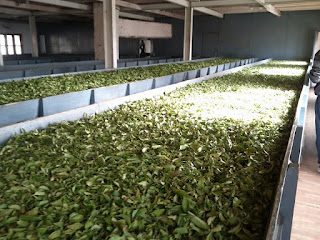I've had a request for some info about these, so I started taking pictures.
Zero dollars (your donation): At the Vipassana retreat center in Dehradun. Two beds. Attached bathroom with spiders. Wake up call at 4:30am. If you're here for a retreat, you're probably not fussed about these things.
Also zero dollars (or by donation): the Golden Temple in Amritsar. An adventure.
Also zero dollars: Mr. Singh's guesthouse in Amritsar. Had a swimming pool and free dance shows, took an hour to get to town, and had running water sometimes.
Four dollars. Haldwani. Well, it was late, and this room was indoors. Even had a (filthy) attached bathroom. One roach sighted.
Six dollars: Mahendranagar, Nepal. Again, just a place to exist for a few hours. No bugs!
Six dollars: Bhojbasa, Gangotri, Uttarakhand, India. Almost froze for eighteen hours and developed a weird scratch/rash (that thankfully just went away), but it included meals and a wonderful sunrise.
Seven dollars: Hotel Divya in Rishikesh. Functional and clean, big building so I didn't meet anyone there, but it worked.
Ten dollars: Tansen, Nepal, at the Gauri Shankar guest house. There may have been a little bit of inflation, as it was the one place that every guidebook and person pointed us to. Low on amenities, no hot water, but clean and central.
Ten dollars: Mandap Hotel in Pokhara. There are four thousand hotels in Pokhara, and they all cost $10. Shop around, and push back on "service charges". It had wifi (like all of Pokhara), the showers were hot sometimes (never sure when), and it wasn't very conducive to meeting people.
Ten dollars: one hotel in Nainital that was kind of chilly and had a couple of spiders.
Twelve dollars: another hotel in Nainital that was better but had no windows.
Sixteen dollars: Sunflower Guest House in Kolkata. Though it's listed as $15 on their website; haggle. A basic but clean room with hot water (out of the faucet, not the shower, so you have to bucket it), and I've only spotted two tiny roaches in four days. I think that's good enough. The place is surrounded by other hotels that cost less, but I was a bit scared coming into Kolkata, as the only comment I'd heard about Kolkata lodging was "I got bedbugs."
Also sixteen dollars: house boat in Kashmir. *sigh* Kashmir! What is wrong with this place. So the price was quoted to me on the phone (reluctantly) as $10-20. I thought that meant $10 without meals or $20 with. But then I was rather forcefully served meals. So when I went to pay, I figured I'd pay somewhere between 10 and 20. But then this guy tried to tell me $10 was for the other boat, and this boat was $30. Or $50. Or something. I got him down to $16, and he said "are you happy with this price?" and I said sure. Note: "are you happy with this price?" means "I am taking you so hard that I actually feel kind of bad", and therefore the answer is always no.
Eighteen dollars: Revolver guest house in Darjeeling. It's Beatles themed. Dad will be sorry to know that my room was "Paul". It was also maybe 50 degrees at night: Darjeeling is not a town of widespread central heating. But the folks at Revolver tried their best with an electric blanket, heavy other blankets, and a kerosene space heater if you want.
Twenty dollars: I think that was their recommended donation at the Santosh Puri Ashram near Haridwar. Included meals, tea, a beautiful garden and all, daily puja services and yoga classes, and internet in the library. Bathroom next door.
Two hundred and forty dollars: all manner of nice places in Bhutan!
What have I learned from this?
- it is hard to look at a room and tell, on the spot, whether it's good enough, because there are so many things you have to remember. It would be useful to develop a checklist of what I need in a room. It'd be something like this, in order from most to least important: no bugs, clean looking (to increase likelihood of no bugs), running water, friendly/haimish, good location, hot water (if in a cold location), wi-fi, towel, laundry service. And I'd draw the line after "running water". But then, there are always surprises: is it good enough if it has all those things but also a big hole to the outside in the bathroom wall?
- Haimishness is a very hard quality to determine. Things that help include a nice communal area that people actually want to hang out in, low price (meaning more backpackers who want to meet up), general comfort, friendly hosts, and a good number of rooms but not too many. Siddharth Guest House in Dharamsala and the Gangs-Shun Homestay in Leh spring to mind as good examples. Revolver had the ingredients to be haimish (central room with the only wi-fi connection), but only 5 rooms, so nobody was ever around. The Santosh Puri ashram was pretty haimish; sometimes people didn't leave all day. The Sunflower, Mandap, and my hotels in Bhutan were not at all haimish, nor were the junky spots in Haldwani or Mahendranagar. Maybe haimishness clusters at the center of the price range. But either way, it's really hard to tell, whether you book online (look at photos I guess?), on the phone ("um, is your hotel friendly?"), or in person (unless you see a bunch of folks hanging around). Someone should make a list of friendly hotels. Cancel that; hotel reviews should say how friendly the place is.
- I think $10 is the knee of the curve, amenities-wise. You don't gain much by going above $10, until you go way above $10. But you gain a lot as you get up to $10.
- That said, prices go up in big cities and some resort towns.

















































